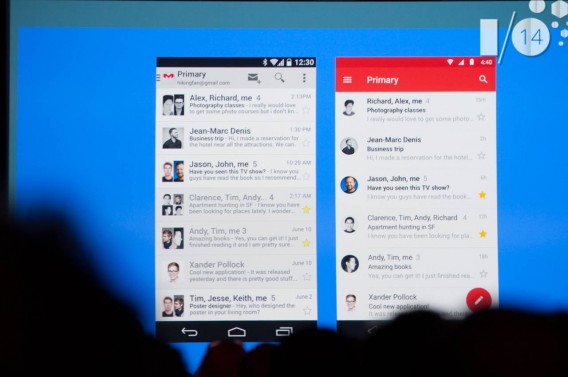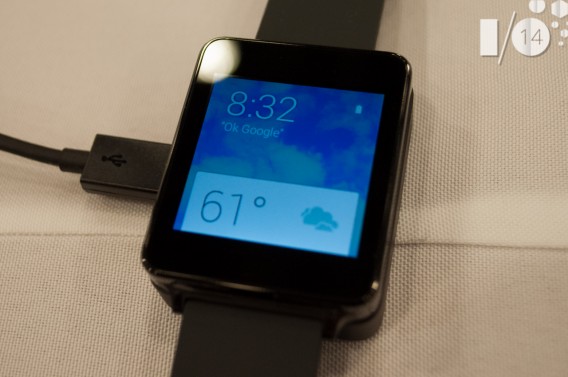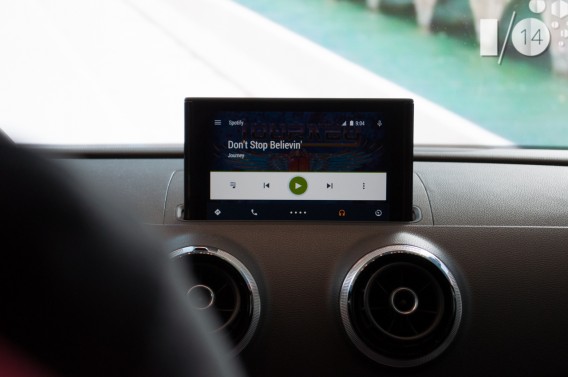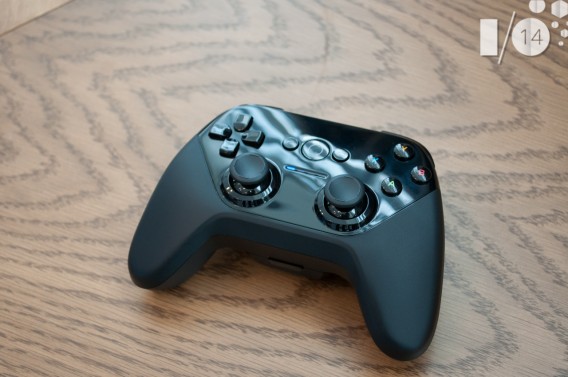Being at the Google I/O 2014 keynote was a surreal experience. Google had a livestream on YouTube but sitting in the audience and seeing demos live was an electric feeling.
While I wasn’t able to sit down until fifteen minutes after the event started, watching the demo of Android L and the new Material Design guidelines made me excited. In ways, Material Design is a counterpoint to iOS 7‘s redesign.
But Android L goes beyond just mobile. Android Wear, Android Auto, and Android TV show how Google is expanding Android onto different platforms. Android apps are also coming to Google’s Chrome OS.
Material Design is a huge visual change for Android that will extend to third party apps as well. Google spent a lot of time talking about unifying its platforms by using a common design, allowing you the same experience on any device.
Material Design
Google’s unification plan begins with Material Design. Android’s interface much more colorful and interactive. The Android L demo showed this by showing the difference between Gmail on a smartphone and tablet. Material Design simplifies design while still offering an easy-to-understand experience. The updates to Gmail and the dialer app are clear examples.

Google was smart to show off Android L and release a developer preview so developers can update their apps with the new design guidelines. Even though Android L will ditch the old Android runtime, Dalvik, for ART (which will become official with Android L) and the new OS is designed for speed, the added animation elements may slow down less powerful devices.
The same question remains: will older devices be able to run Android L? Google Play Services does an excellent job of updating devices automatically, but these aren’t the same updating to a new operating system.
Android Wear
There hasn’t been a compelling reason to absolutely need a smartwatch. In some cases, being multiplatform weakens the use because developers have to provide access for multiple operating systems. Samsung has shown how locking a smartwatch to a device isn’t the best way to release one. The idea of Android Wear is more interesting because it doesn’t try to replace the smartphone, but enhance the experience with the most common uses.

The first Android Wear smartwatches will launch in the United States this July. Google’s apps currently take main stage for usability, but third-party apps should be coming soon. Since I use a lot of Google services like Google Now, I think that having the ability to view that information without taking my phone out will be really useful.

Android Wear is still in its infant stages. It’s going to be interesting to see how the platform matures as app developers start to modify apps to communicate with it.
If anything the proximity unlock for the smartphone through Android Wear is a cool feature. When Android L releases, it will let you unlock your phone through the Bluetooth connection it has to your Android Wear device. This means that you won’t have to enter a pin or passcode to unlock the device. Using proximity will tell your phone that you are nearby and unlock the phone automatically.
Android Auto
Two other announcements by Google were Android Auto and Android TV. Google has been vague about its automotive plans, but we finally have a clear vision from Google with Android Auto.

Android Auto is a streamlined version of Android that’s streamed to an in-car dash display. Android Auto is designed for voice control so you don’t take your focus away from driving. It was funny to hear that Google wants Android Auto to make driving safer getting rid of distractions, but there were a lot of examples in the demo where the driver had to look at and touch the screen.

Android Auto will be available in a number of cars at the end of the year. You’re probably not going to buy a car because it has Android Auto, but it’s something to consider while car shopping.
Android TV
I use the Chromecast daily because streaming videos from YouTube is much more enjoyable on a bigger screen. Android TV is another platform designed to unify the usability of SmartTVs which is fragmented and generally an “add-on” function. With most apps available on other platforms like consoles or set-top boxes, the idea to unify the platform is a good idea.

But the inverse is that, you will either need to buy a new TV or new hardware that will support it. Razer announced a set-top box for Android TV, which is good for people who don’t want to buy a new TV.

Since I already own a Chromecast, the only real use I see for Android TV is to play games. The Chromecast does an excellent job streaming video through supported apps so I don’t know if it’s really necessary to “upgrade” to Android TV. The fall release will really show if the SmartTV platform can survive with Android.
Android and Chrome OS
There were a lot of rumors in the past that Chrome OS and Android would combine into one operating system. It doesn’t look like that will happen, but with the release of Android L, there will be a lot more communication between the two operating systems. Notifications from the phone will now display within Chrome OS and Android apps can be used on Chromebooks.
The example used in the keynote was Evernote, which makes sense, but wouldn’t it be just as easy to use the web app? I’m more interested in seeing apps that don’t have a web version being displayed on Chrome OS.
I think showing the communication between Android and Chrome OS is a response to Apple’s integration of iOS and OS X. Even though Chromebooks appear to be popular, this cross platform interactivity could be a feature that no one uses.
Android is going to be everywhere
The announcements from Google I/O 2014 show that Android is becoming more than a mobile platform. The versatility of the operating system will be shown off when Android L and other Android platforms release this fall. Android isn’t supposed to be a vertical platform, like Apple is with iOS and OS X. Google wants Android to grow on other platforms by allowing developers to design apps to work across multiple devices and it’s supplying the tools.
Connecting your entire life through Google, more specifically Android, may raise privacy concerns for some people. But if you use the different Google services on the web, connecting them through the Android OS isn’t that weird. As an Android user, you probably have Gmail, search for directions through Google Maps, and use the Google Play Store for apps.
Concerns about privacy and personal data are more important now, but a lot of apps you use collect data. The difference is that Google supplies tools for productivity and it takes security very seriously. Regardless of the weird acquisitions the company has made, Google wants a connected experience that can predict what you want to provide convenience.

The evolution of Android in L, Material Design, and other platforms is going to be interesting. Android L is giving the operating system a redesign while connecting all the different new platforms. When these new projects launch in the fall, the differences between what was shown at I/O and the full release will likely be huge.
Follow me on Twitter: @chrislikesrobot


